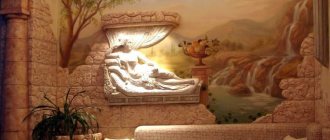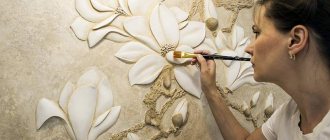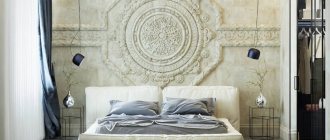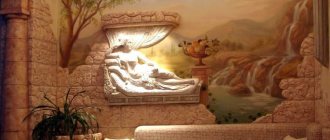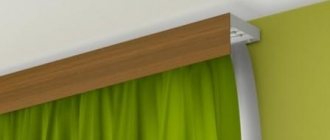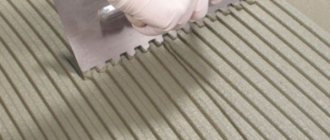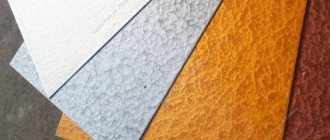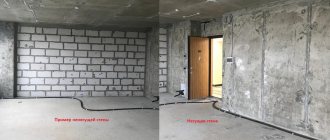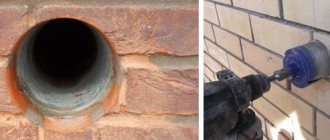Relief is a special sculptural technique when the composition is created only partially in the form of a three-dimensional image on a plane. It is considered a separate subtype of art. Data on where the relief was first applied has not been preserved. It developed unevenly in Ancient Greece, India, Ancient Rome, Egypt and the countries of the Far East. One of the most famous examples of relief, which has survived to this day in a partially destroyed form, is the Pergamon Altar of Zeus, now located on the museum island in Berlin.
general characteristics
The monument is a structure with a wide staircase and a colonnade, under which there is a long panoramic relief. It depicts separate groups of people, animals and giants engaged in battle. Relief is classified into four types:
- Bas-relief. The sculptures protrude less than half above the flat background.
- High relief. The sculptures greatly extend beyond the background and are sometimes even partially separated from it.
- Counter-relief. It is a negative, that is, the composition is not convex, but concave.
- Ankre, or koylanaglyph. Only the outline of the image is cut out on a plane (usually a wall), that is, the composition is as concave as the counter-relief, but its depth is the same everywhere. This type is considered more primitive. It became widespread only in Ancient Egypt.
Bas-relief was rarely used in the interior of simple houses. Only very wealthy people who had real palaces at their disposal could afford it. More often, bas-reliefs were used to decorate the exteriors of Gothic-style houses and the interiors of cathedrals and churches. In modern interiors, decorating with such sculptural compositions has become accessible. You can even create a bas-relief yourself. We’ll talk further about the features of such sophisticated decor and how to make it yourself.
Column base
The column trunk (fust) is mounted on a pedestal decorated with bas-reliefs depicting Trajan's war trophies. Its height is 5.5 m. On the south-eastern side of the pedestal there is a door that leads to the tomb of the Roman emperor and his wife.
Such placement of urns with ashes is the exception, not the rule. The Romans had a strict ban on burial in the sacred part of the city, which was called the "pomerium".
However, some historians believe that this was no exception. During the construction of the imperial forum with a column, the surrounding landscape was greatly changed, and the city and pomerium boundaries were moved. It is likely that the burial ban was not violated.
Another remarkable feature of the pedestal is a commemorative inscription about who erected this Roman column and in whose honor. All the regalia of Emperor Trajan are listed here, and the fact that a rather impressive hill was razed for construction is also mentioned.
The memorial inscription is made in an exemplary capital font , where each letter is precise and geometrically verified. The serrations on the letters hold the line perfectly. Having studied the inscription on the pedestal of Trajan's Column in Rome, scientists came to the conclusion that it was made by hand, without the use of any measuring instruments. To carve the inscription, the craftsmen used only special brushes with a wide tip.
Pros and cons of bas-relief
The bas-relief is made of wood, clay, alabaster, plaster or stone. The latter method is very labor-intensive and requires a high level of skill from the sculptor, since any mistake cannot be corrected. Bas-reliefs are created from wood by carving, and clay is the most accessible material, suitable even for beginners. They were still doing modeling during their school years. Bas-relief products, unlike ordinary sculptures, allow you to maintain a 1:1 scale and at the same time save on materials. After all, clay, for example, to sculpt a full-length person will require almost 60-70% less than to create a similar full-length statue. Previously, any types of reliefs decorated walls and ceilings and at the same time remained part of them, that is, the composition was static and could not be moved. Now you can make a small bas-relief on a special canvas stand and move it around the apartment if necessary.
Column capital
The capital crowns Trajan's Column. Along its perimeter there is a small observation deck with a fence.
At the top there is a figure of the Apostle Peter , whose gaze is turned to the Vatican. However, this statue was not always there. Initially, the column was topped with a sculpture of an eagle, which symbolized the invincibility and courage of the emperor. After Trajan's death, a sculpture depicting him was installed on the top of the capital. And only in the 16th century a statue of the apostle appeared here.
This is the only structural change that the ancient Trajan's Column has undergone during its entire existence.
Preparing for work
The bas-reliefs are made by hand. Of course, on the market for cheap decorative elements you can buy ready-made plaster stampings, but this will not add uniqueness to the design. Before you start working on your first full-fledged composition, you need to train your hand. It is most convenient to practice on clay, plaster or plaster. The materials are plastic and allow you to correct mistakes before they dry completely. The canvas will be plywood with a low wood frame. In rare cases, you can create a composition directly on a section of the wall. This option is suitable only for those sculptors who are firmly confident in their abilities. They also create large-scale panoramas directly on the wall, which would be simply inconvenient to hang after production on separate canvases. You also need to make standard forms for repeating elements ahead of time to reduce the labor intensity of the process.
For example, it is much easier to produce each berry of a grapevine in molds. These elements are often made of gypsum, but alabaster is considered the optimal material. We'll talk about where to get molds a little later. Instead of a stencil, regular cling film will be used. First, it is placed on a hard surface and the outline of the individual elements is drawn. Then the stencil will be applied to the composition and the same outlines will be transferred to a still soft and pliable base. Now let’s begin a short, general master class on creating a bas-relief for interior decoration.
Trajan's Column - general information
Trajan's Column was erected under the direction of the architect Apollodorus of Damascus . To build the column itself, he used 20 blocks of Carrara marble, which were sequentially installed one on top of the other. Another 9 blocks left a pedestal and a capital with a statue of the Apostle Peter.
All individual parts of the structure are connected using the dry masonry method, without any binding solution. However, between the blocks there are strong iron fasteners filled with lead. The connections between them are almost invisible.
Interesting fact! The diameter of the column at the pedestal and in the upper part varies. At the bottom it is 3.69 m, and at the top - 3.2 m.
Trajan's Column is hollow. Inside it there are 185 steps carved in a spiral, along which you can climb to the platform of the capital. Tourists are not allowed access there.
Creating a bas-relief with your own hands
To make a bas-relief, you first need to prepare the base. In its role, “Marseille wax” or simple plaster is used. Using a spatula, apply the mixture to the wall or plywood canvas. First, they are leveled, and then they are given relief if necessary (with sponges, foam rubber, crumpled bags or pieces of fabric).
The next step is to transfer the design from the film stencil to the prepared canvas. The picture is applied to a section of the wall or plywood and the outline of the picture is pressed into the not yet completely hardened plaster. As a result, the primitive sketch is ready. Now you need to give it volume. To do this, mix the modeling mixture. Alabaster is optimal, since after complete hardening it is not inferior in strength to concrete. But plaster can crack, crumble and is afraid of water. Dry alabaster is mixed with water immediately before work until smooth. Then they begin to add volume to the applied pattern. This is not done immediately in one fell swoop, but gradually, layer by layer. Recesses can be made by scraping out part of the base or by applying additional “extra” layers to nearby objects. In certain places, pre-made elements in molds are attached to the canvas. If necessary, if the mass dries quickly and the work progresses slowly, it must be moistened with water.
When forming parts, not only tools are used, but also the sculptor’s fingers. After the work is completed, it is given time to dry. Then the composition is sanded using sandpaper, removing excess layers or smoothing out roughness.
Tools for modeling putty in an apartment
For sculpting work with putty you will need the following tools:
- putty knife;
- trowel for decorative plaster;
- palette knives;
- bucket for solution;
- stacks of different sizes;
- pencil for drawing an outline;
- polyethylene film;
- chisel;
- sandpaper;
- masking tape;
- brush-brush;
- cream injector;
- latex gloves.
Volumetric compositions are invariably associated with classical styles.
The materials you will need are plaster itself, primer paint, Marseilles wax, acrylic or latex paints, glue, spray paint.
Wall mount
The problem of attaching the bas-relief to the base can be avoided if you sculpt it directly on the wall. In other cases, the composition is placed on liquid silicone or a special adhesive. If the relief was modular, then after fixing the joints, they are carefully rubbed down with putty. It is not recommended to decorate “flimsy” plasterboard walls with this decor. The base material must be reliable and strong. The joints between the bas-relief and the wall are also carefully masked. It is important to know. By the way, the modular composition is convenient for beginners. If unsuccessful, any of the relief components can be replaced without harm to it.
How to use 3D panels
Volumetric panels are used to decorate the walls with a claim to originality and style. A certain atmosphere is created in the room; decor can highlight some part of the wall, or, conversely, distract attention.
If you need to shift the emphasis from a high ceiling, choose horizontal models. Accordingly, if you need to “raise” the ceiling, install it vertically.
Stylish decorations in any room PHOTO: reminterio.ru
The color scheme and texture allow you to make an accent in the right place in the room PHOTO: dizajninfo.ru
Useful tips
If the sculptor plans to create large bas-relief details, then for additional stability it is better to use wire. The frame will also simplify the sculpting process. The top of the bas-relief can be coated with a layer of primer or water-based paint. For alabaster, such a coating will only add gloss, but for more fragile plaster or sensitive plaster it will provide additional protection. While working, it is better to use a professional set of stacks that will help you create even the smallest details.
Choose the bas-relief not only to the style, but also to the character of the room. Culinary themes are suitable for the kitchen: voluminous still lifes, flower arrangements or panoramas of ancient cities. Stylish images of natural elements will look organic in the bedroom: bouquets, trees, animals. In a children's room, with the help of relief, you can create a real fairy tale, and its scenes decorate the entire perimeter of the room.
Professional decorators recommend not using false walls, arches or furniture to zone small studios. Bas-reliefs are perfect for these purposes; in combination with color differentiation, without further ado, they will make it clear where the functional zones are divided.
Bas-reliefs are not very often used in design. It is much easier to cover a wall with photo wallpaper with the desired image. Many people are intimidated by the complexity of the process. If you have patience, you can find hidden talents in yourself and decorate every room of your apartment with three-dimensional paintings, making its design original and unique. To get inspired, you can study the magnificent sculptures decorating Moscow's Bolshoi Theater or the numerous houses on the streets of St. Petersburg.
Examples, interesting ideas for relief walls
Bas-relief patterns are very diverse - the theme depends solely on the imagination of the master. Bas-reliefs are made large, occupying the entire wall, or very small, located above the desk, head of the bed, interior door, arch, around the perimeter of the window, around the TV screen, etc. Different paintings are made for different rooms.
The bas-relief looks very aesthetically pleasing and cannot be compared with other types of interior decoration.
The children's room is decorated with three-dimensional pictures depicting your favorite cartoons, cute animals, flowers, and berries. In the bedroom, a huge convex butterfly placed above the bed, a field of fluffy dandelions, in a technique reminiscent of a fresco, looks good on the wall. The living room is decorated with large-format roses, designed so that the petals look thin and the water droplets on them are transparent. Tree branches on a completely free wall are intertwined so that they easily form a frame for a picture or a large mirror.
You don't have to be a sculptor or painter to pull this off. It is enough to acquire basic skills.
An arch decorated with birds of paradise, such as hummingbirds, is sculpted in the hallway. If there is a free wall, a wild animal is depicted on it, which will symbolically guard the house. It could be anyone - a wolf or a zebra, a lion or a small tiger cub, a snow leopard or even an angry cat. The picture is carefully drawn in color and covered with a moisture-proof compound. The kitchen interior is decorated with warm, mostly bright, “tasty” tones - orange, light green, raspberry, etc. It is recommended to depict fruit baskets, still lifes with appetizing dishes, and flower bouquets. To create a bas-relief in the bathroom, use moisture-resistant coatings, marine themes - waves, sailboats, algae, silhouettes of dolphins, underwater fish, etc.
This decor can decorate any room.
How to make vintage plaster panels on the wall
Making a plaster panel with your own hands, as we have seen, is not difficult. But not everyone dares to make it unusual and give it an old-fashioned look. The main thing is to choose the right material and become a little familiar with the technique of applying special paints in the desired shades. Such vintage panels will have an elegant and special sophisticated look.
With the help of paint and bitumen wax, you can give the panel a certain charm and spirit of antiquity
Related article: Stages of do-it-yourself restoration of wooden doors
Vintage panels are made as follows:
- We take bitumen wax and carefully apply it to the surface of the panel using a brush. This creates an illusion similar to stone.
- After application, remove the resulting film using a napkin or paper towel.
- Next, sprinkle the surface of the panel with talcum powder, and fill the recesses with wax. We tint the raised recesses with dark paint.
You can achieve a “marbled” effect using paint and a regular sponge. You can add antiquity to the panel with special gold foil or color.
A safe option to make the panel look vintage is to paint the indentations with silver paint.
How to choose volumetric wall panels
The choice will dictate the desired interior of the room, the expected surface relief, the owner’s taste preferences and financial capabilities.
If your budget is limited, you can purchase panels made of chipboard or bamboo. They will last less than others, but will look decent. If you line the walls with relief made of wood, glass or aluminum, the appearance of the home will look expensive and very attractive.
Whatever material you choose, the design of the room should be special and impressive PHOTO: samoremont.com
In the middle price range there are panels made of MDF and PVC. This is a good option for different rooms, and they require virtually no maintenance.
